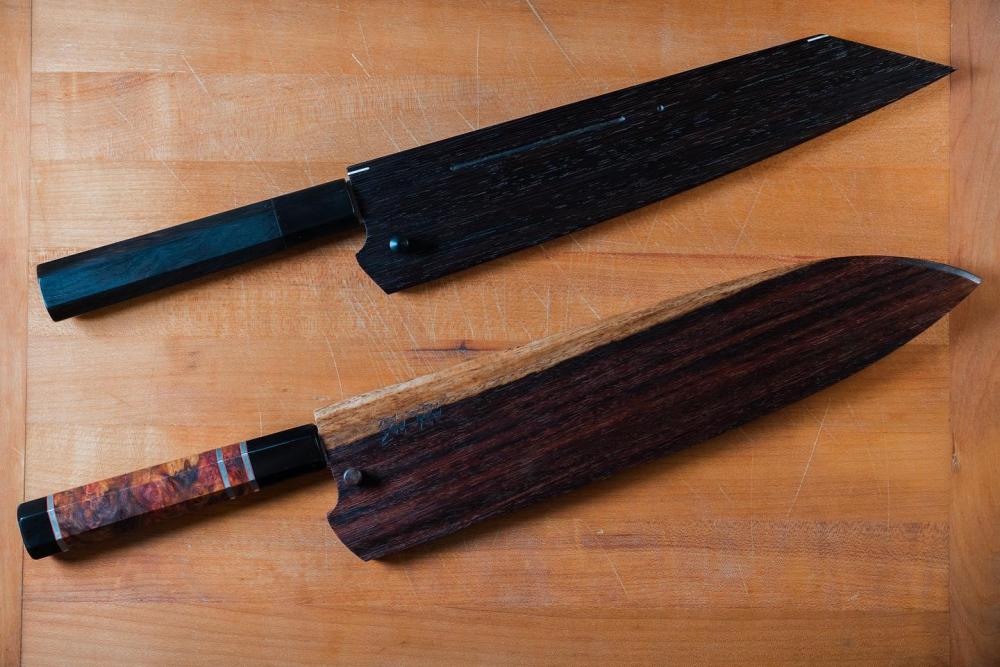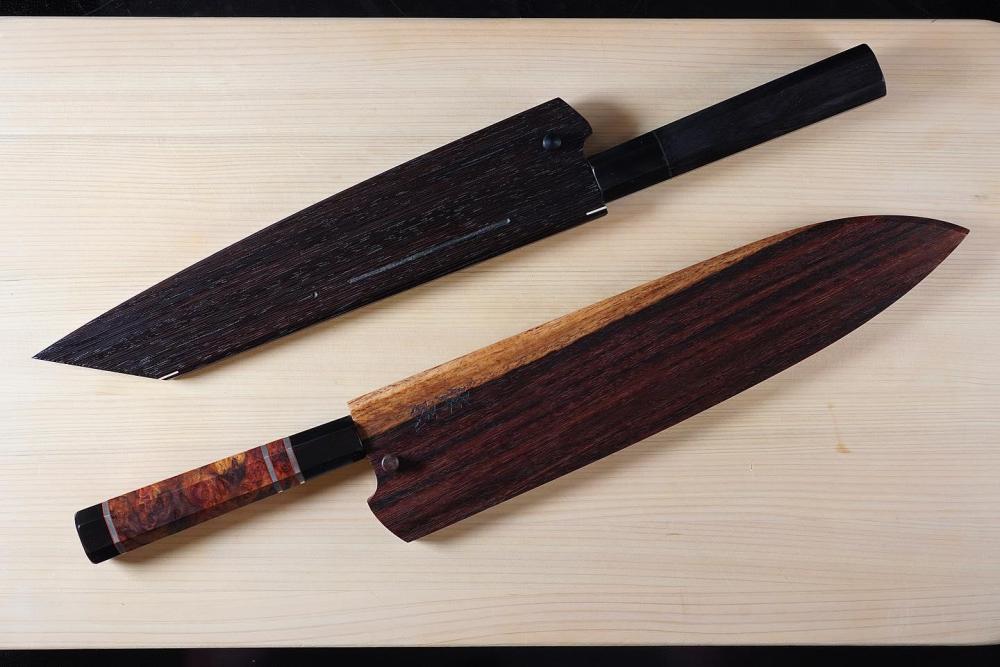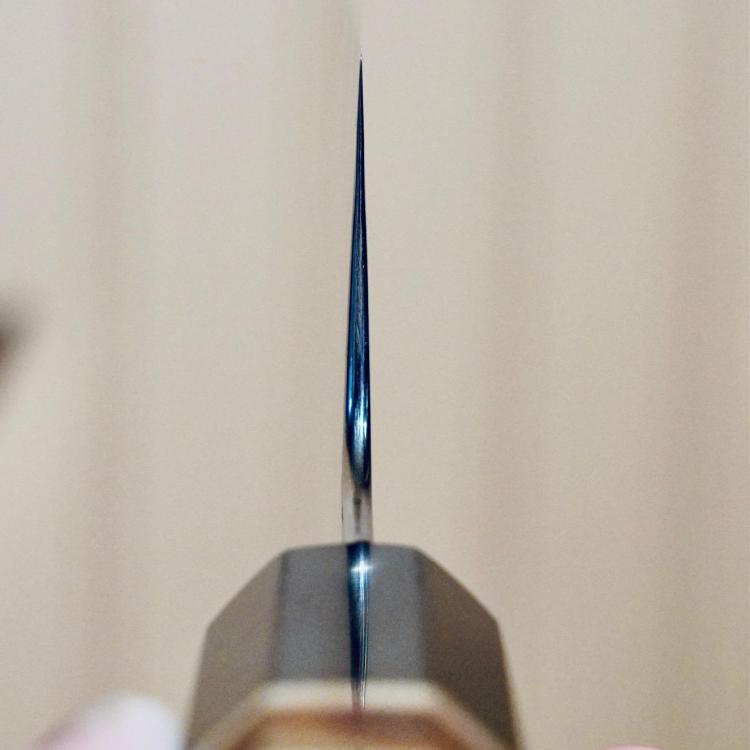It looks evenly more menacingly utilitarian when it's in its saya.
Sukenari offer knives in a variety of steels (VG10, Ginsan, Aogami Super, White 1, ZDP189, R2, HAP40, and more I'm forgetting about). They come with either a "hairline" migaki finish and a mirror polished etched damascus finish. The damascus is stunning, and I think mine is the most beautiful object I've ever owned. But it costs a lot more and doesn't doesn't really contribute to performance. I will say that when I saw that polished blade with that custom amboyna handle, I fell in love immediately. The damascus one is a 270mm gyuto in ZDP-189 steel. That's a very highly alloyed steel that has a tremendous amount of both carbon and chromium in it. It was developed by Hitachi primarily for kitchen knives. It's capable of achieving a very high hardness, around 65-66 HRC in this case.
The bottom knife is a 240mm gyuto with a kiritsuke tip in HAP40 steel with a hairline finish. HAP40 is much less alloyed than ZDP is, but it is capable of even higher hardness ratings. Sukenari treat theirs to 67-68HRC which is quite high. For both ZDP and HAP40, you'll want to have good stones to sharpen them with. Shapton Glass do a great job, but vitrified diamond are the "sky's the limit" type of stone for these extremely hard steels.
The profile on both knives has a generous flat spot, with the only obvious difference in profile coming from the shape of the tip. That's down to preference of what you like the look of; both cut quite well at the tip, with a slight advantage going toward the thinner k-tip migaki. The fit and finish on both knives is superb, but the damascus ones have gorgeously rounded spines and choils, making them extremely comfortable to hold. The hairlines are rounded as well, but not to the same degree (but still much better than many, many companies out there). Sukenari's knives have excellent convex grinds that are extremely thin behind the edge. The cladding on the damascus knives is slightly thicker than the hairline knives, making them slightly thicker at the spine. But it's subtle and the performance on both is very similar (which is to say, exceptional). Here are a couple choil shots. ZDP first, then the HAP40:
The prices on Sukenari vary depending on the finish and core steel. There's a big upcharge on the damascus version, and steels like ZDP cost a lot more than more basic steels. I think the best value might be the R2 line, which is a high hardness stainless steel that's much less expensive than some of the alternatives. FYI: The edge lengths on Sukenaris are about 8mm shorter than their stated length. My 270 is 262mm, and the 240 is 232. This means that the 210 is more like a 202, which turned out to be too short for my preferences.
The 240mm HAP40 hairline is maybe my favorite all around knife. It's long, but not too long. It cuts like a dream and is very easy to control. It just feels like a part of you. And when you hold it, it screams "craftsmanship" in a way that few factory-made knives do. Both knives are fantastic for tackling a big head of cabbage or iceberg and finely shredding it into oblivion. Great for julienne, fine dice, brunoise. And it's great on animal protein as well. The generous flat spots on these make them great for push cutting, which is generally my preferred cutting technique. It also works well for rocking, which is a bonus.
With all that said, here's a video of a 210 ZDP damascus made by a Chef Knives to Go forum member. It pretty well captures the experience of using one, as well as the beauty of the mirror polished, shot blasted damascus finish.
I'm sure those were more details than you wanted to know, but in case I didn't say enough, feel free to ask more questions. 😁








